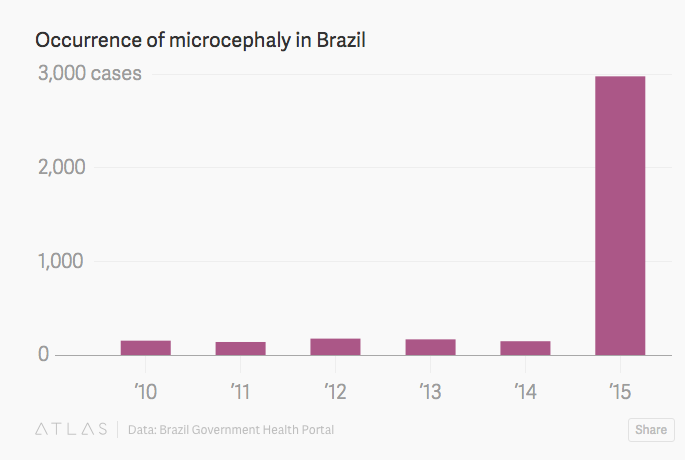 Mosquitos have always been a critical vector in the spread of multiple infectious diseases to humans. Perhaps the two most historically important examples are yellow fever and malaria. Now, a new viral scourge has reared its ugly head, in Brazil, where babies are plagued with shrinking brains and undersized skulls.
Mosquitos have always been a critical vector in the spread of multiple infectious diseases to humans. Perhaps the two most historically important examples are yellow fever and malaria. Now, a new viral scourge has reared its ugly head, in Brazil, where babies are plagued with shrinking brains and undersized skulls.
The virus that causes yellow fever is in the same family as hepatitis C. The disease was so prevalent and dangerous that it derailed the construction of the Panama Canal a nearly impossible job under ideal conditions. The Canal Project was initiated by the French in 1881. However, so many workers became ill, or died from the infection, that the French happily turned over the project to the United States in 1904.
A two-year campaign to eradicate mosquitos from the canal region, overseen by Dr. William Gorgas at great personal risk, was so successful that by 1906, by using improved sanitary measures and insecticide spraying, the number of new cases was essentially zero. This, despite the fact that up until that time, 85 percent of all canal workers had been hospitalized from the infection.
Malaria, which is caused by a protozoan infection, is also spread by mosquitos, but a different species: the female anopheles is the vector. Malaria has taken a far greater toll worldwide: every year between 2000 and 2010, there were over 200 million cases worldwide, resulting in between 600,000 and 800,000 deaths, mostly in Africa. Ongoing efforts to combat the infection have been partially successful, but worldwide the infection still takes a terrible toll.
Now, there is a new mosquito-borne infection, and it sounds like it comes from a science fiction movie. The Zika virus, which originated in Uganda, is now spreading across South America, and has hit Brazil so hard that the the government has estimated that there have been 1.5 million new cases since May 2015.
In healthy adults and children, the symptoms of infection are usually mild, self-limiting, or even non-existent. But, the case with unborn babies is quite different. When a pregnant woman is infected, her baby can be born with a condition called microcephaly (shrinking of the brain), which is either fatal, or causes lifelong brain impairment. The virus has been detected in the placentas of pregnant women, as well as in brains of microcephalic babies. The following graph makes it obvious how fast this infection is spreading, and its impact on neonates:
In fact, the disease has so frightened Brazil's healthcare community that doctors have taken the unprecedented step of recommending that women delay getting pregnant.
There is no vaccine or drug to prevent or treat the infection, so the only recourse is to avoid being bitten, which means that the use of insecticides is required. It will be interesting to see how this plays out. If Africa is a good model, then answer is "not very well." In the contest between environmentalists and human lives, environmentalists "won," mostly by getting DDT banned in 1972. An estimated 60 million people have died of malaria since that time.

